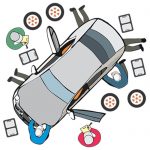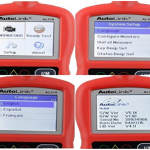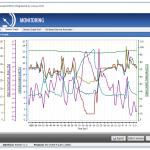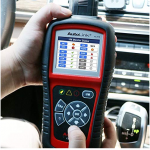A code reader is an essential tool for any car owner to have. Code readers, also known as diagnostic scanners or OBD2 scanners, allow you to read and clear error codes from your vehicle’s on-board diagnostics system. This allows you to quickly diagnose issues with your car before they lead to bigger problems down the road. Here’s a guide to everything you need to know about code readers.
What is a Code Reader?
A code reader is a device that plugs into your car’s OBD2 port, usually located under the steering column. It reads diagnostic trouble codes (DTCs) that are stored when the check engine light comes on. Each trouble code corresponds to a specific issue, like an oxygen sensor failure or faulty spark plug. Code readers allow you to read these codes yourself and determine the most likely culprit before bringing your car into the shop. Many code readers also allow you to clear codes once an issue is resolved.
Benefits of Using a Code Reader
- Save money on repairs – By reading codes yourself, you can often diagnose simple issues like loose gas caps. This allows you to fix some problems without a trip to the mechanic.
- Identify issues quickly – Code readers give you specific DTCs to help pinpoint the root cause of problems. You’ll know if it’s a bad sensor versus an ignition coil issue.
- Monitor vehicle data – Many code readers let you view live engine data like coolant temperature, RPMs, and more. This helps with troubleshooting.
- Reset check engine lights – Once a problem is fixed, a code reader can reset your check engine light. No need to go to a shop just for this simple reset.
- Identify issues before they become major repairs – Catching problems early with a code reader can prevent greater damage down the line.
Types of Code Readers
- Basic code readers – The most affordable option. Reads and clears generic DTCs but lacks some advanced features.
- Enhanced code readers – Provide more data like freeze frame info and live vehicle data. Cost range is $100-$200.
- Professional scanners – Offer full manufacturer-level diagnostics for specific makes. Used by auto technicians. Cost is $200-$400+.
- Multisystem diagnostic tools – Provide advanced scans of ABS, airbags, transmission and more. For professional mechanics.
Must-Have Features
- Read and clear codes – At minimum, any code reader should allow you to pull diagnostic codes and erase them after repairs.
- OBD2 compatibility – All 1996+ vehicles use OBD2 ports, so your scanner must plug into this universal port.
- Live data – The ability to view real-time engine data greatly aids troubleshooting efforts.
- Freeze frame data – Records sensor data the moment a check engine light turns on. Helps identify root cause.
- Battery reset – Resets your car’s ECU and other onboard computers when battery is disconnected.
- Warranty – Look for at least a 1 year warranty for durability.
Top Recommended Code Readers
- Innova 3100 – Highly affordable enhanced scanner with great features. Reads ABS codes too.
- ANCEL AD410 – Very user-friendly enhanced scanner with print function. Live data stream available.
- Actron CP9690 – Pro-level scanner with OBD1 support for older vehicles. Works on all makes.
- Foxwell NT301 – Loaded with special features like battery registration. Works on most Asian/European cars.
- Autel AL319 – Professional-grade wireless scanner with top ratings. Works on both old and new model cars.
Diagnosing Check Engine Light Issues
When your check engine light turns on, plug in your code reader to pull the diagnostic trouble codes. From there, lookup code definitions online or in your user manual to identify the associated issue. Pay attention to patterns – if multiple cylinder misfire codes popup, it likely points to an ignition coil problem. Try simple fixes first like replacing spark plugs. If the light comes back on, further diagnosis may be needed by a professional.
With the right scanner tool and some DIY troubleshooting, you can diagnose most check engine lights yourself. Code readers provide the key to unlocking the meaning behind those mysterious dashboard lights. Equipped with the trouble code knowledge, you can decide whether to tackle the repair yourself or seek help from a professional mechanic.







You really don’t have to buy yourself a scanner all of the automotive shops and too, the automotive parts places like O’Reilly and schucks and parts plus and carquest and motion auto AutoZone.
check around give them a call before you go down there. most of them anymore have someone that has an obd 1 and an obd 2 they either have them in store or someone brings theirs from home and they do it totally for free they’ll give you the codes and they’ll tell you what that code is pointing to all for free